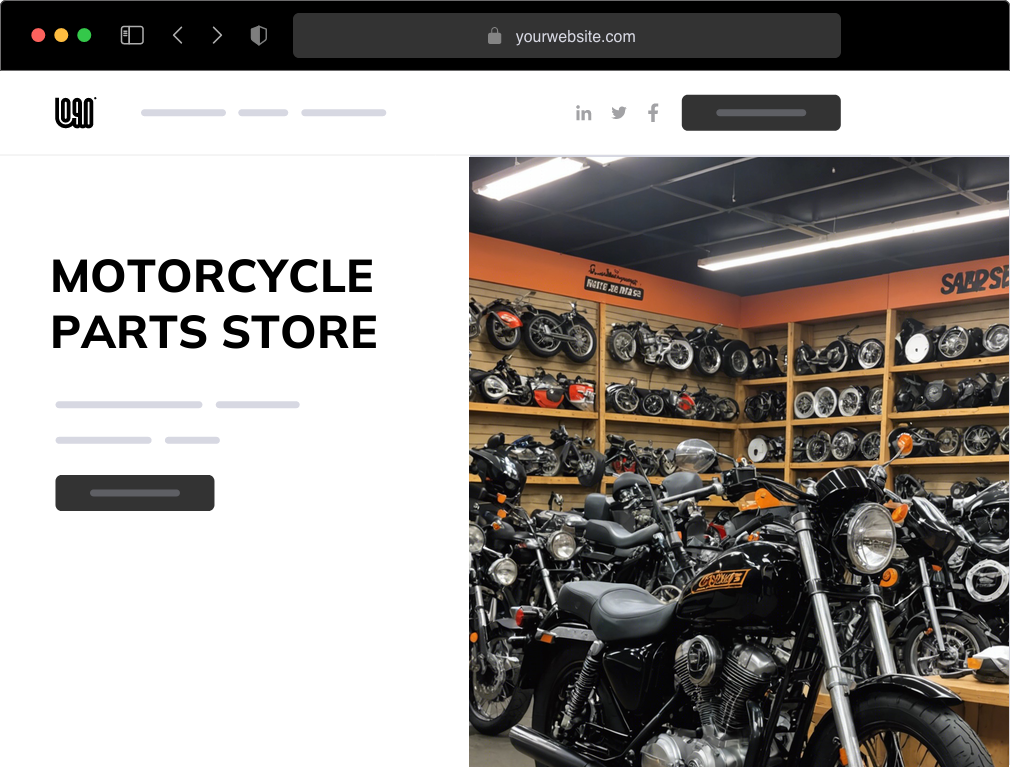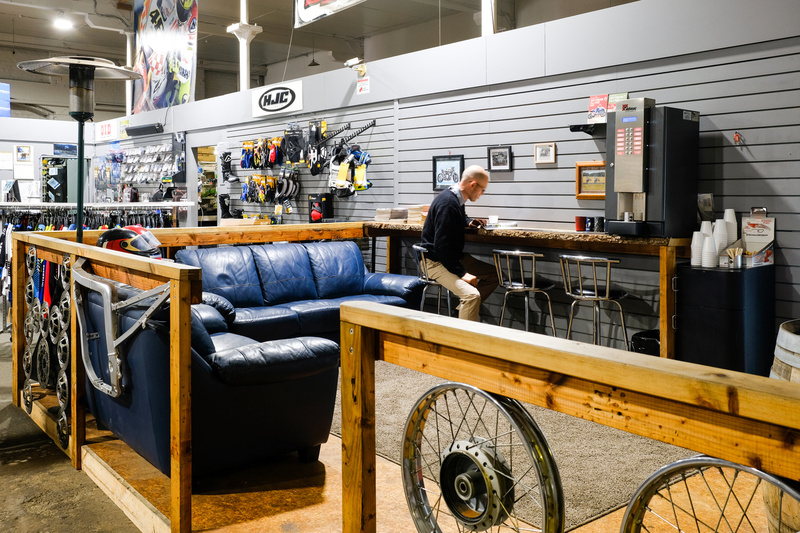A Thorough Appearance at Bike Components: What Every Cyclist Should Know
A detailed understanding of motorbike components is not simply helpful yet critical for any cyclist aiming to take full advantage of efficiency and safety and security. Each part, from the engine's detailed functions to the integrity of brake systems, plays a crucial duty in the overall experience and capability of the bike. Beyond simply understanding what these components do, it is important to value exactly how they support and interact one another. This interconnectedness can make the distinction between a smooth ride and unforeseen issues. What ins and outs lie within this mechanical symphony that every rider should grasp?
Comprehending the Engine
The engine, usually considered as the heart of a motorcycle, is a complicated setting up of parts that function in harmony to convert gas right into activity. At its core, the engine's key function involves the combustion process, where air and gas mix and spark within the cyndrical tubes, resulting in controlled explosions that drive the pistons. These pistons move up and down, converting chemical power right into power, which subsequently turns the crankshaft, ultimately powering the bike.

Understanding the details of a motorcycle engine is vital for lovers and riders alike. It not just offers insight right into exactly how motorcycles attain their remarkable power and rate however also help in efficient maintenance and troubleshooting, guaranteeing long life and dependability when driving.
Suspension Equipments
While the engine powers the motorcycle, the shock absorber plays an important role in guaranteeing a smooth and regulated trip. The shock absorber is accountable for taking in shocks from the road surface area, preserving tire contact, and supplying stability throughout cornering and braking. It makes up two primary parts: the front forks and the back shock absorbers.
Front forks are typically telescopic, containing a spring and dampening device. The springtime compresses and prolongs to absorb bumps, while the dampening device regulates the movement to avoid excessive bouncing. This mix guarantees the front wheel remains touching the road, using superior handling and comfort.
The rear suspension, typically a monoshock or twin-shock configuration, functions similarly to the front suspension but is customized to support the bike's weight and biker - motorcycle shop. It manages back wheel movement, adding to the bike's general balance and responsiveness
Shock absorber can be flexible, allowing bikers to make improvements preload, compression, and rebound setups according to individual choices and riding problems. This adjustability improves performance by enhancing the bike's communication with varied terrains. In summary, an effective suspension system is critical for motorcyclist convenience, safety, and the motorbike's managing expertise.
Brake Parts
Stopping power is a fundamental aspect of motorcycle safety, and it hinges on the performance of the brake parts. The key components of a bike's braking system consist of the brake pads, calipers, rotors, and master cylinder. motocross gear nz. Each of these elements plays a crucial function in making certain effective stopping performance
Brake pads are vital as they develop the essential rubbing against the blades to decrease or quit the motorcycle. Created from products such as sintered metal or natural compounds, the option of brake pad material significantly influences performance and durability. Calipers, real estate the brake pads, use stress to the pads when the brake bar is engaged, helping with contact with the blades.
The blades, usually made from stainless-steel or actors iron, are mounted to the wheels and act as the surface area against which the brake pads press. Their design, including diameter and density, influences warm dissipation and stopping power. The master cylinder, attached to the brake lever, creates hydraulic stress transmitted with brake lines to the calipers, making sure constant braking pressure.
Regular maintenance and inspection of these components are crucial for optimal efficiency, stopping wear and making sure biker security when driving.
Tire Basics
Beyond preserving robust braking systems, making certain ideal tire performance is just as significant for motorcycle security and performance. Tires are the sole call point in between the roadway and the bike, making their condition pivotal in managing, security, and general experience top quality. Choosing the appropriate tire type is crucial, as it directly influences traction and performance. Options range from visiting to sport tires, each developed to fit certain riding problems and styles.

In addition, think about the tire's age. Rubber substances deteriorate over time, even if step appears ample. Examine the sidewall for the DOT (Department of Transport) code to determine the tire's age. Normally, replacement is recommended every five years, no matter of wear. Investing attention in these tire basics not only optimizes efficiency however additionally significantly enhances riding safety.
Electric Systems
In the realm of motorbike upkeep, the electrical system plays a critical duty in ensuring trustworthy performance and biker safety. This intricate network includes necessary parts such as the battery, generator, starter electric motor, and circuitry harness. Each component is vital for the seamless procedure of the motorcycle, from ignition to illumination and communication with different sensors.
The battery serves as the heart of the electrical system, providing the necessary power to start the engine and run accessories. Routinely inspecting the battery's voltage and terminals for rust is vital to stop unanticipated failures. The alternator, on the other hand, recharges the battery while the engine is running, guaranteeing visit our website a continuous power supply.
The starter motor is accountable for starting engine procedure, converting electrical power right into power. To preserve it, bikers ought to take notice of any kind of uncommon sounds or troubles during start-up. The wiring harness serves as the lorry's anxious system, connecting all electric elements. Making sure that the cables are intact and cost-free from damage is essential for making sure and stopping short circuits capability.
Verdict

Quiting power is a fundamental element of motorbike safety, and it hinges on the performance of the brake components. The main aspects of a bike's braking system consist of the brake pads, calipers, blades, and master cylinder.Brake pads are vital as they produce the needed friction versus the rotors to reduce down or quit the motorcycle.Beyond maintaining robust stopping systems, ensuring ideal tire performance is equally substantial for motorbike safety and performance.In the realm of bike maintenance, the electric system plays a crucial role in making sure reliable performance and rider security.